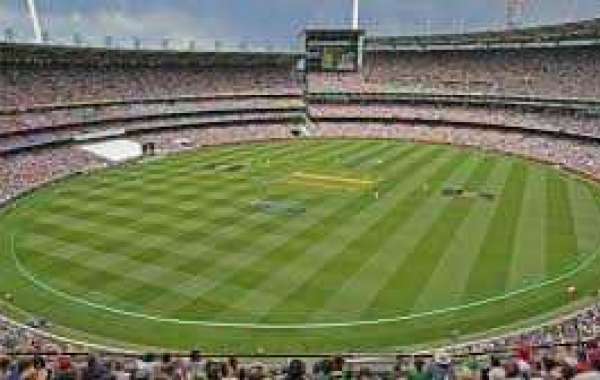The batsman tries to keep the bowler from hitting the wicket with the ball, while also attempting to hit the ball hard enough to give him time to run to the other end of the pitch, before any of the nonbatting team picks up the ball and hits the wicket. If the wicket is broken, by a thrown ball or by the wicketkeeper or bowler, the batsman is dismissed. The striker does not have to run after he hits the ball, and a miss does not count against him. However, if he gets a hit and thinks he can score a run, he runs for the opposite wicket while the second batsman - the nonstriker - runs toward him. If they each reach the opposite wicket before a wicket is broken, a run is scored. Also, if the batsmen theing there is time, they may run back for two or more runs, crossing each time. If they score an even number of runs, the striker is the next to hit the ball. However, if an odd number is scored, the nonstriker will be facing the bowler and thus getting his chance to hit the ball. Any runs scored in this manner go to his personal score for the game.
When a hit ball goes beyond the boundary, the game is paused and four runs are added to the team's score. In order for the team's score to go up, several other things may happen other than the batsman scoring runs. A bye occurs when a ball from the bowler is missed by the batsman, but he can still make a run. A leg bye happens when the ball touches part of the batsman's body, but he can still make good a run. A wide occurs when the ball is out of reach of the striker, and this counts for a run. No balls occur when the ball is improperly bowled. Each of these extras add points to a side's score.
If a bowler bowls six balls, not counting wides and no balls, he completes what is termed an over. A new over is then begun by a different bowler at the opposite wicket. The field must also adjust accordingly. If a bowler bowls a complete over without a batsman personally scoring a run, it is called a maiden over.
A bowler may bowl either right or left armed, propelling the ball overhand without bending his elbow. He is allowed any number of steps to give a delivery, but he may not cross the bowling crease. A good bowler must be able to control length and direction, which includes the spin placed on the ball to attempt to deceive the batsman into being dismissed.
A batsman may hit either right or left handed, based on a vertical bat with its entire blade faced to the ball. There are many different batting strokes, including the forward stroke, the back stroke, the leg glance, and the cut.
Fieldsmen must be quick runners, with good hand-eye coordination and the ability to throw a cricket ball far. He should be able to guess the batsman's strokes, and act accordingly.
The wicketkeeper should have exceptionally good reaction time and sharp sight. He must concentrate fully on every ball.














